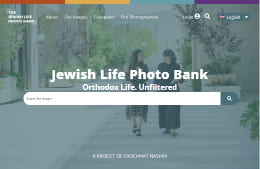There’s a reason Israelis are called sabras. Those thick cactuses and their prickly fruits look threatening with truly tough exteriors. Once you’re past that thick skin, however, the fruit is sweet, delicious and unlike anything you’ve experienced before. They thrive in tough conditions and the plants have been used to delineate borders and protect land for centuries.
Israelis have that same toughness around a softer, sweeter core. It takes a lot to faze them. So when, recently, the United Nations Educational, Scientific, Cultural Organisation (Unesco) decided to list the Old City of Hebron as an endangered Palestinian world heritage site, most Israelis just rolled their eyes at the latest attempt to remove the Jewish history from their land.
Hebron, located south of Jerusalem, has been a Jewish site since Abraham purchased the land from Ephron the Hittite 4,000 years ago to bury his wife Sarah, as described in the book of Genesis. Now called Ma’arat HaMachpelah — the Tomb of the Patriarchs — Abraham is buried there with Sarah, along with their son Isaac, grandson Jacob and their respective wives, Rivka and Leah. It is the second holiest site for Jews after the Temple Mount area, and where Jews have lived and prayed for millennia. It was also King David’s first capital of Judea.
Jews lived in Hebron almost continuously throughout the Byzantine, Arab, Mameluke, and Ottoman periods, but from 1297-1967, under Muslim rule, Jews were forbidden to go beyond the seventh step of the Tomb of the Patriarchs.
In 1929, 67 Jews were murdered in Hebron, and the remainder were forced to flee. Only after the 1967 Six-Day War, was the Jewish community of Hebron re-established. In 1994, 22 Palestinians were murdered in a rare but horrific act of Jewish terrorism by a local doctor.
Jews are allowed in a small part of the Tomb of the Patriarchs, some 20 per cent of the compound — with the rest of the area forbidden to them for all but 10 days a year.
The recent Unesco resolution joins a number of other UN resolutions denying the Jewish history and connection to the Land of Israel and comes on the heels of one that denies Jewish history of the Old City of Jerusalem.
Refusing to let it pass without response, Prime Minister Netanyahu announced that Israel would reduce the amount it pays annually to the United Nations in membership fees by $1 million. He declared that the money would instead be used for “the establishment of a Museum of the Heritage of the Jewish People in Kiryat Arba and Hebron.”
The cut brings Israel’s slashing of funds to the UN to $10 million since December of last year, and is the fourth time in eight months that Israel has reacted to UN resolutions by announcing the reduction of its payments to the body.
I don’t know of another nation whose history and connection to its land is being erased in a concerted campaign to deny its rights, culture, land, and holy sites. It is an incredible thing to have one’s past denied.
Jews have lived in the Land of Israel for millennia. We’ve prayed toward Jerusalem and visited the tombs of our foremothers and fathers throughout that time.
Even in exile, the Jews longed for Jerusalem. I was recently in the stunning British Museum, during a brief visit to London. As I walked through the glory of cultures long gone, I was astonished at how the Jews were hardly mentioned. I stared at the relief of the sacking of Lachish and took in the scenes of the exiling of the Jews with tears in my eyes. Then I was shocked to realise that, while Lachish was described as being in Judea, there was no mention of Jews, Hebrews or Israelites.
No one would know which women and children are depicted being led away, or who were the men being tortured as they were removed from their land. I felt horrified, a visceral reaction to being erased from history.
It is true that Unesco and UNHRC have an automatic Arab majority, and will continue to pass ever more fanciful resolutions that steadily erase the Jewish connection to the Land. It is also true that our prime minister must speak out against it.
For the rest of us, like the sabras that line the hills and plains, we must stand strong and proud, protecting our land and declaring that we are here to stay — no matter who might like it otherwise.
Originally published in the Uk Jewish Chronicle July 24, 2017


